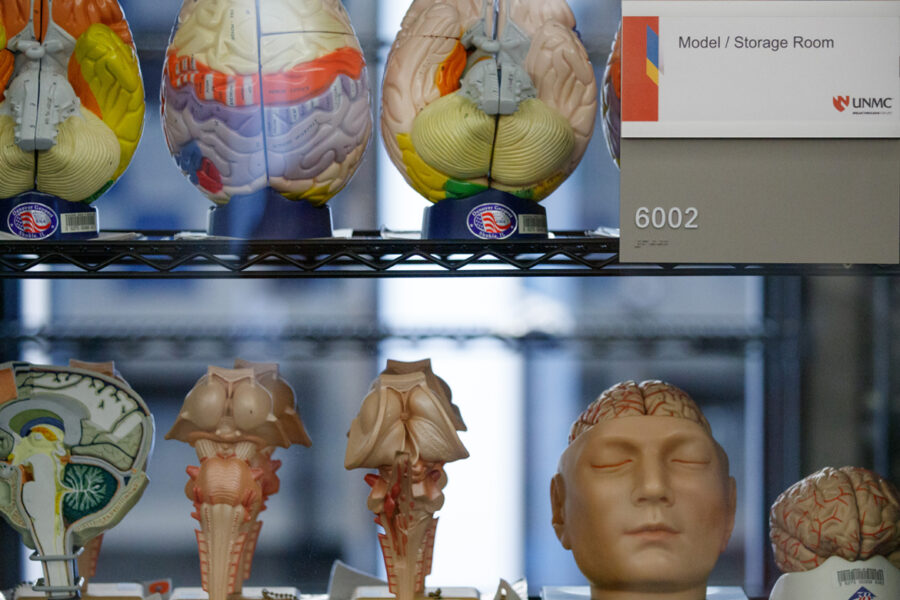Blog author
Tyler Hamilton, Library Reference Associate
Although skulls get a lot of attention, McGoogan Library has a myriad of other anatomical models for students, faculty and staff that perhaps you didn’t know about. Hearts, brains and brain stems are other models that also get checked out regularly. Did you know the library has full skeletons and flip charts showing the bones, tissues and organs of the human body? Full skeletons and flip charts are the only models that must remain in the library. Every other model can be checked out and taken home.
Our collection includes a diverse range of organs, such as a kidney, a pancreas with spleen, eyes, genitalia and an ear canal. There are various limbs, joints and torso—both skeletal and muscular—to support your learning needs. Let us know if there are any models you think we should acquire.
Why use anatomical models?
Models can be a great resource for a variety of purposes. They can enhance projects, serve as visual aids when instructing, and cater to visual and kinesthetic learners.
Who can benefit?
- Students: Whether you’re studying anatomy, physiology, or a related field, these models can help you visualize complex structures and systems.
- Faculty and instructors: Use the models to enhance lectures, demonstrations, or hands-on activities in the classroom.
- Clinical faculty and house officers: Use models for peer or patient education.
How to find and access the models
We encourage everyone to explore and utilize these resources—they’re here for you!

Such a fascinating collection—anatomical models offer such a hands-on way to learn. Great to see these resources being highlighted and appreciated!